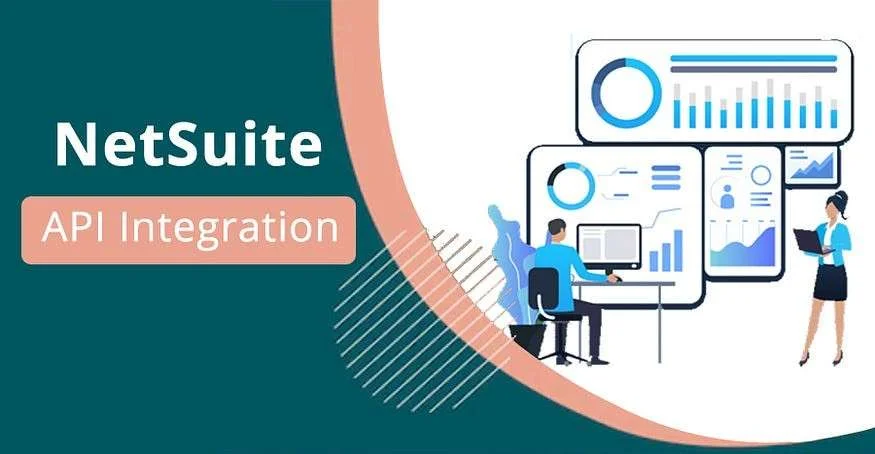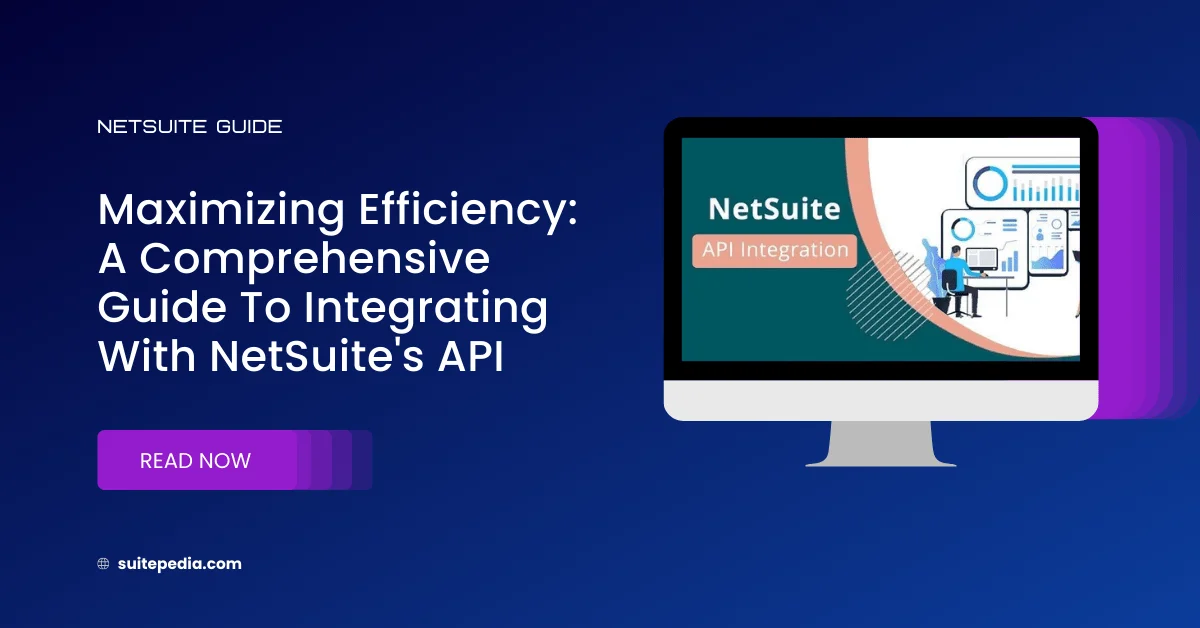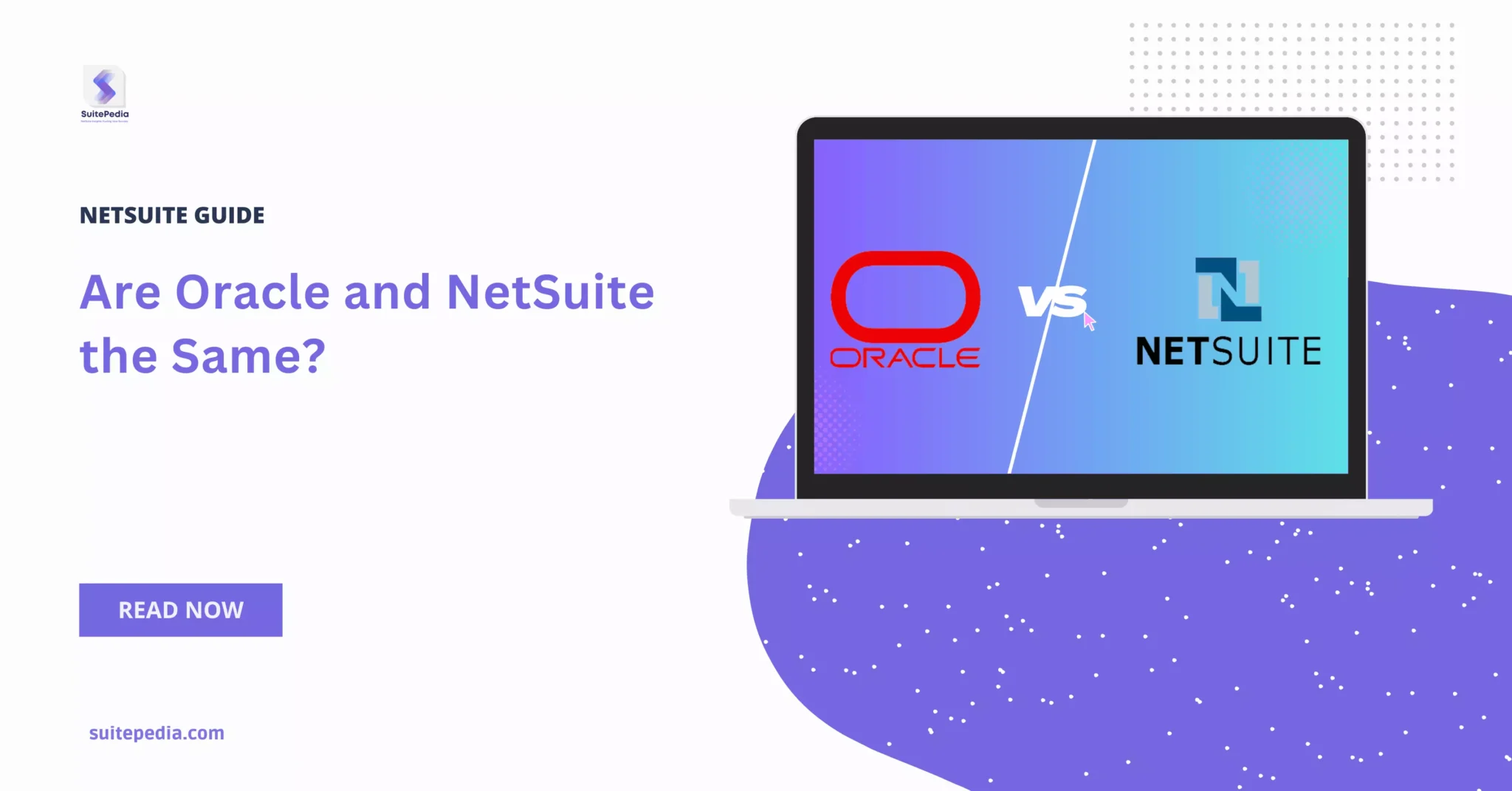Table of Contents
ToggleComprehensive Guide to Integrating with NetSuite's API
NetSuite, a global leader in cloud-based ERP systems, is an indispensable tool for businesses seeking streamlined operations and efficient management. As organizations embrace the power of NetSuite, the need to seamlessly integrate with its APIs becomes paramount. This comprehensive guide aims to delve deeper into the intricacies of NetSuite API integration, providing a detailed roadmap for developers and businesses looking to unlock the full potential of their ERP solutions.
Table of Contents
Introduction to NetSuite API Integration
- Understanding the Significance of NetSuite:
- NetSuite’s role as a global ERP powerhouse.
- NetSuite’s role as a global ERP powerhouse.
- Challenges in Native Integrations:
- Navigating the complexity of highly customizable ERP platforms.
- Overcoming challenges in building and maintaining native integrations.
Initial Setup and Preliminary Strategic Decisions
- Foundational Steps for Integration Projects:
- Recognizing the universal steps for initiating any integration project.
- Addressing the importance of strategic decisions at the outset.

Introduction to NetSuite API Integration
Understanding the Significance of NetSuite:
NetSuite’s Role as a Global ERP Powerhouse:
NetSuite stands tall as a leading cloud-based Enterprise Resource Planning (ERP) system globally. Its significance lies in serving as a comprehensive business management solution that integrates key functions such as financials, customer relationship management (CRM), and e-commerce. The platform’s cloud-based nature makes it accessible and scalable, catering to businesses of various sizes and industries.
Key Aspects of NetSuite’s Significance:
Comprehensive Business Management: NetSuite offers a unified platform, enabling businesses to manage core processes seamlessly. This includes financial management, order processing, inventory management, and beyond.
Scalability and Flexibility: As a cloud-based solution, NetSuite can scale to meet the growing needs of businesses. Its flexibility allows customization to align with specific industry requirements and evolving business models.
Global Reach: NetSuite’s global presence and multi-language, multi-currency capabilities make it an attractive choice for businesses operating in diverse regions.
Real-time Insights: The platform provides real-time analytics and reporting, empowering decision-makers with timely and accurate information for strategic planning.
Its Impact on Diverse Businesses and Programs Worldwide:
NetSuite’s impact extends across a myriad of industries and business functions:
Industry Impact:
Retail: NetSuite enables retailers to manage inventory, streamline order fulfillment, and deliver a seamless customer experience across online and in-store channels.
Manufacturing: Manufacturing businesses benefit from end-to-end visibility into production processes, supply chain management, and demand forecasting.
Services: Service-oriented businesses leverage NetSuite for project management, resource allocation, and efficient service delivery.
Business Function Impact:
Financial Management: NetSuite’s financial tools facilitate accurate accounting, financial reporting, and compliance, providing a strong foundation for fiscal responsibility.
CRM: The integrated CRM module helps businesses build and nurture customer relationships by centralizing customer data, enhancing communication, and streamlining sales processes.
E-commerce: NetSuite’s e-commerce capabilities empower businesses to create and manage online storefronts, ensuring a cohesive online presence.
Challenges in Native Integrations:
Navigating the Complexity of Highly Customizable ERP Platforms:
While NetSuite’s customization capabilities are a strength, they also introduce complexities in the integration landscape:
Customization Challenges:
Diverse APIs: NetSuite offers multiple APIs, including SuiteScript, RESTlet, REST, SuiteQL, and SOAP. Selecting the most suitable API for specific integration needs can be challenging.
Highly Configurable: NetSuite’s high degree of configurability means that integrations must adapt to various custom fields, records, and business processes.
Global Configurations: Integration efforts may require adjustments based on the specific configurations of individual NetSuite instances, making a one-size-fits-all approach challenging.
Overcoming Challenges in Building and Maintaining Native Integrations:
Strategies for Success:
Thorough Planning: A well-defined integration strategy that considers the unique requirements of the business is essential. This includes understanding data flow, user access, and the frequency of data synchronization.
Authentication Considerations: Choosing the appropriate authentication method, such as OAuth 2.0 or token-based authentication, is crucial for secure and seamless integration.
API Selection: Evaluating and selecting the right NetSuite API based on the specific integration requirements ensures optimal performance and functionality.
Permission Management: Managing roles and permissions is critical, especially when dealing with diverse records and fields. A nuanced approach to role creation and permission assignment helps strike the right balance between security and functionality.
Testing and Debugging: Rigorous testing using tools like Postman or Insomnia is essential to identify and resolve issues early in the development process. Understanding common error scenarios and utilizing tools like the Records Catalog enhances debugging efficiency.
Continuous Optimization: Regularly revisiting and optimizing integrations ensures they align with evolving business needs and take advantage of new NetSuite features.
Preliminary Strategic Decisions
The success of any NetSuite integration project heavily relies on making informed preliminary strategic decisions. This phase involves laying the groundwork and making crucial choices that will shape the integration’s architecture and functionality. Let’s delve deeper into the key components of these strategic decisions:
Auth
Authentication Methods: Choosing the right authentication method is a critical decision in the integration process. The two primary options are OAuth 2.0 and token-based authentication.
OAuth 2.0: A widely used and secure authentication protocol that allows applications to securely access data without exposing sensitive information. It is known for its simplicity and is a preferred choice for many modern integrations.
Token-based Authentication: Involves the use of access tokens, which act as temporary keys providing access to a resource. While it may require more manual handling of tokens, it offers flexibility and is well-suited for certain integration scenarios.
Significance:
Security: Ensuring a secure connection between systems is paramount. The chosen authentication method should align with industry standards and best practices to protect sensitive data.
Efficiency: The selected method should complement the workflow of the integration, offering a balance between security and efficiency. Consider the ease of implementation and maintenance.
Select an API
API Selection: NetSuite provides a variety of APIs, each catering to specific integration needs. The primary APIs include SOAP, REST, and RESTlets.
SOAP (Simple Object Access Protocol): A protocol for exchanging structured information in web services. It relies on XML for message format and is known for its reliability and extensive functionality.
REST (Representational State Transfer): A more lightweight and flexible option compared to SOAP. It uses standard HTTP methods for communication and is widely adopted for its simplicity.
RESTlets: SuiteScript-based scripts that can be called by external applications or other SuiteScripts. They extend the capabilities of SuiteScript and provide a way to create custom endpoints.
Determining Factors:
Functionality
Requirements: Understand the specific needs of your integration project. SOAP may be preferable for certain functionalities, while REST might be more suitable for others.
Ease of Use: Consider the development team’s familiarity with each API. A more straightforward API might lead to quicker development cycles.
Steps to Configuring the NetSuite Account:
Create the integration record in NetSuite:
Authentication Methods: Specify the preferred authentication method (OAuth, Token-based) during the creation of the integration record. This sets the foundation for secure access.
Callback URLs: Define callback URLs to handle the redirection after the user grants permissions. Callback URLs play a crucial role in completing the OAuth flow.
Consumer Key and Secret: These credentials are generated during integration record creation and act as the application’s identity. Safeguarding these credentials is essential for secure communication.
Create a role for the new integration:
Determine Permissions: Assigning appropriate permissions to the integration role is pivotal. During development, an administrator role is often used for flexibility, allowing access to various records and fields.
Fine-Tune Permissions: As development progresses, fine-tune permissions based on specific records and fields. This ensures that the integration has precisely the required access without unnecessary privileges.
Use the role with the NS integration record:
Token and Token Secret Generation: If OAuth1 is the chosen authentication method, the role associated with the integration record is used to generate the token and token secret. These credentials are essential for OAuth1 authentication.
Testing API access and credentials:
Comprehensive Testing: Utilize tools like Postman or Insomnia to thoroughly test API access and credentials. This step ensures that the integration can securely communicate with NetSuite.
Sandbox Considerations: When using a sandbox NetSuite account, account for variations in URLs (suffixes like -sb1) and authentication specifics. Testing in a sandbox environment helps identify and address issues before deploying to production.
Set up your code repository:
Library Installation and Configuration: Certain NetSuite APIs may require specific libraries for proper integration. For example, a SOAP library might be necessary for using SuiteTalk’s SOAP API.
Repository Setup: Install and configure any necessary libraries within the integration’s code repository. A well-organized repository streamlines development and maintenance processes.
Key Takeaways:
Alignment with Integration Goals: Every decision made in this phase should align with the overarching goals of the integration project. Whether prioritizing security, efficiency, or ease of use, the chosen path should contribute to the project’s success.
Flexibility for Future Scaling: Anticipate future needs and potential scaling requirements. The chosen authentication method and API should provide the flexibility to adapt to evolving business demands.
Thorough Testing: The importance of comprehensive testing cannot be overstated. Testing not only validates the functionality of the integration but also ensures that security measures are robust.
Documentation and Knowledge Sharing: Documenting the decisions made during this phase is crucial for knowledge sharing within the development team. Clear documentation aids in onboarding new team members and facilitates ongoing maintenance.
In conclusion, the preliminary strategic decisions phase sets the stage for a successful NetSuite integration. By carefully considering authentication methods, selecting the appropriate API, and following best practices in configuration, development teams can lay a solid foundation for building efficient and secure integrations.
NetSuite APIs and Integration Tools:
NetSuite, being a robust and highly customizable ERP solution, provides a variety of APIs and integration tools to cater to the diverse needs of businesses. Understanding these tools is essential for successful integration, and here we delve into the key components:
SuiteScript:
Overview:
SuiteScript, NetSuite’s JavaScript-based scripting language, empowers developers to extend and customize the NetSuite platform.
It facilitates the creation of custom scripts and functions that can be triggered by specific events, offering unparalleled flexibility.
Key Features:
Custom Logic: SuiteScript enables the creation of extensive custom logic within NetSuite, including validation, reporting, dashboard customization, and data transformation.
Event-Triggered Automation: Developers can use SuiteScript to automate various business processes and workflows by triggering scripts on specific events.
Use Cases: is ideal for businesses seeking a high degree of customization and automation within the NetSuite platform.
It is employed for creating tailored solutions, automating complex business processes, and building custom modules.
RESTlet:
Overview:
RESTlet is a SuiteScript that executes when called by an external application or another SuiteScript.
It acts as a bridge between external applications and NetSuite, allowing the execution of custom scripts.
Key Features:
Data Return: RESTlets can return data, either in plain text or JSON, to the calling application, enhancing interoperability.
Content-Type Header Support: RESTlets support the content-type header, specifying how the request body should be formatted and how NetSuite should format its response.
Use Cases:
RESTlets are useful when integration involves external applications calling custom scripts within NetSuite.
They are employed for scenarios where data needs to be retrieved from NetSuite and shared with external systems.
REST:
Overview:
NetSuite’s REST API provides a set of endpoints for interacting with NetSuite resources over HTTP.
While some REST endpoints are in Beta, the REST API offers a modern and flexible approach to integration.
Key Features:
Resource Access: REST API endpoints allow access to various NetSuite resources, such as records and transactions.
HATEAOS Constraint: The API uses HATEAOS (Hypermedia as the Engine of Application State) constraint, impacting performance as multiple queries are often required for each item.
Use Cases:
REST API is suitable for scenarios where a more modern and HTTP-based approach to integration is preferred.
Developers need to be mindful of the HATEAOS constraint and evaluate its impact on performance.
SuiteQL:
Overview:
SuiteQL is a query language within the REST API that allows developers to query the NetSuite data model.
It supports read operations, providing a powerful mechanism for retrieving information from NetSuite.
Key Features:
Efficient Querying: SuiteQL allows developers to retrieve comprehensive information with a single query, reducing the need for multiple queries.
Dynamic Queries: Developers can craft dynamic queries based on user configurations, providing flexibility in retrieving additional transaction fields.
Use Cases:
SuiteQL is valuable when efficient querying of NetSuite data is required.
It is especially useful when developers need to adapt queries dynamically based on user configurations.
SOAP:
Overview:
SOAP (Simple Object Access Protocol) is a protocol for exchanging structured information in web services.
NetSuite’s SOAP API provides a reliable and comprehensive way to interact with NetSuite, particularly for writing information into NetSuite.
Key Features:
Access to All Fields: SOAP allows referencing all fields in a request, providing comprehensive access to record details.
Bulk Create or Update Requests: SOAP API supports bulk create or update requests, enhancing efficiency for handling multiple records at once.
Use Cases:
SOAP API is preferred when comprehensive access to all fields is required.
It is beneficial for scenarios where bulk create or update requests are necessary, optimizing performance.
How to Make a Dynamic SuiteQL Query:
Overview:
Adapting SuiteQL queries dynamically based on user configurations provides flexibility in retrieving additional transaction fields.
Resources like the Records Catalog can assist in constructing queries for unique integration configurations.
Key Steps:
Understanding User Configurations: Identify the user-configurable parameters that influence the dynamic nature of the query.
Crafting Dynamic Queries: Use conditional logic within the query construction process to adapt to different user configurations.
Utilizing Resources:
Leverage resources like the Records Catalog for reference on custom fields, records, and their relationships.
Benefits:
Dynamic SuiteQL queries ensure that the integration is adaptable to changing user requirements.
Developers can build a more robust and flexible integration solution that caters to a variety of scenarios.



